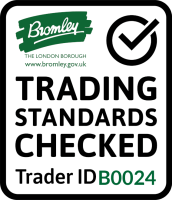
As we enter the midst of winter, we are heavily focused on the ways to keep our pipework in good condition, preventing them from freezing over and keeping our water flowing throughout the season. One thing you may not be thinking as much about is the condition of your radiators. Keeping your home warm can support you in keeping your pipework in good condition, adding to the benefits of your heating system and preventing you from requiring an emergency call-out. However, if your heating isn’t working as effectively as it could, it may be due to trapped air within your radiators and they may need to be bled.
What does it mean to bleed a radiator?
Bleeding your radiator is the simple act of releasing any trapped air within your heating system. This helps it to operate efficiently, achieving the effective results you expect.
Why would you need to bleed your radiator?
If your radiators are faulty and not heating as they should, you could find that you are spending unnecessary amounts on your energy bills. This could be because there is air trapped within them. In these cases, to feel the warmth, you could have your heating system switched on for longer periods of time or be boosting it to a higher temperature regularly, which can increase your heating bills. Bleeding your radiator can remove any cold spots, allowing your radiators to work effectively.
How do you bleed a radiator?
To bleed your radiators, you’ll need:
• A radiator key
• A tea towel or cloth
There are the 5 simple steps you should follow…
1. Make sure your heating is switched off and allow your radiators to cool sufficiently. You cannot bleed a radiator when they are hot, as you could risk burning yourself or being sprayed with hot water.
2. Place your radiator key over the valve located on the side of your radiator. You’ll find this towards the top. The key will fit to a square valve, giving you the grip required to turn it anticlockwise. It is normal to hear a hissing sound once you begin turning. In fact, this is a good sign, as this will be the sound of the trapped air escaping. Use your tea towel or cloth to catch any water that escapes.
3. Once the hissing stops, you will want to turn the valve in a clockwise motion to tighten it back again. Ensure it is tight before continuing to the next step.
4. At this point, you will be able to turn your central heating system back on. At this stage, it won’t be uncommon if you see that the pressure on your boiler has dropped. This is usually the case when boilers are bled. You can adjust the pressure with the filling loop.
If you find that, after carrying out these steps, your radiator is still holding cold spots, or isn’t heating as much as it should, you should call for a professional assistance. The cause of your uneven heating could be sediment within the pipework and radiators instead.
Keep your home warm and in working condition this winter. At Bromley Plumbers, our team of specialists are on hand to provide general and emergency plumbing services. With more than 100 years of combined experience, you can depend on us whenever you need us. Give us a call on 0208 050 2707 or send us an email at info@bromleyplumbersltd.co.uk to find out what we can do for you and your home.





